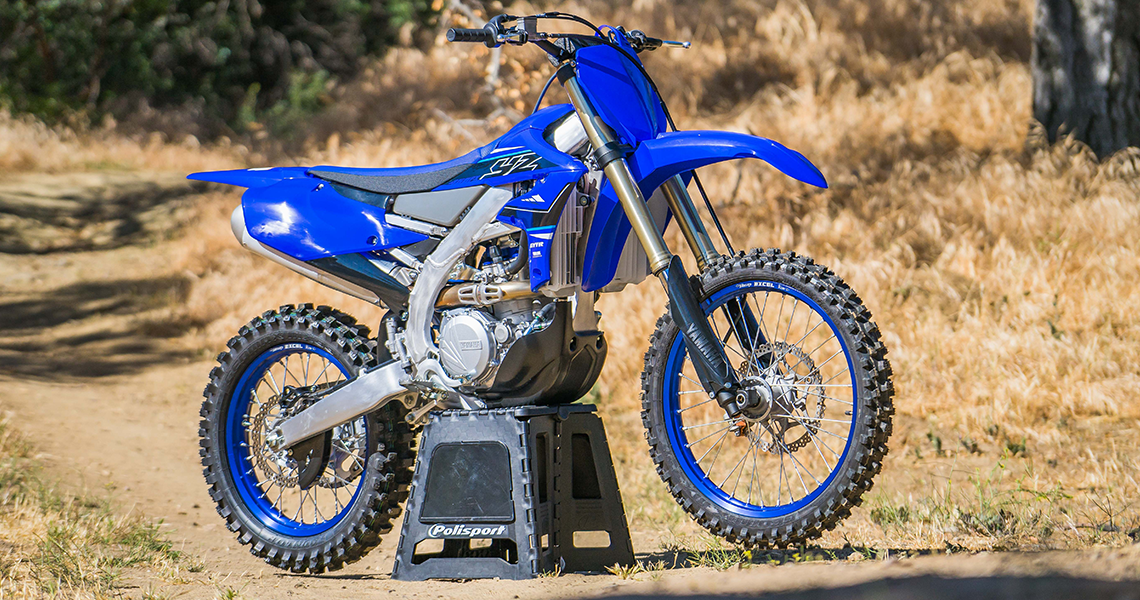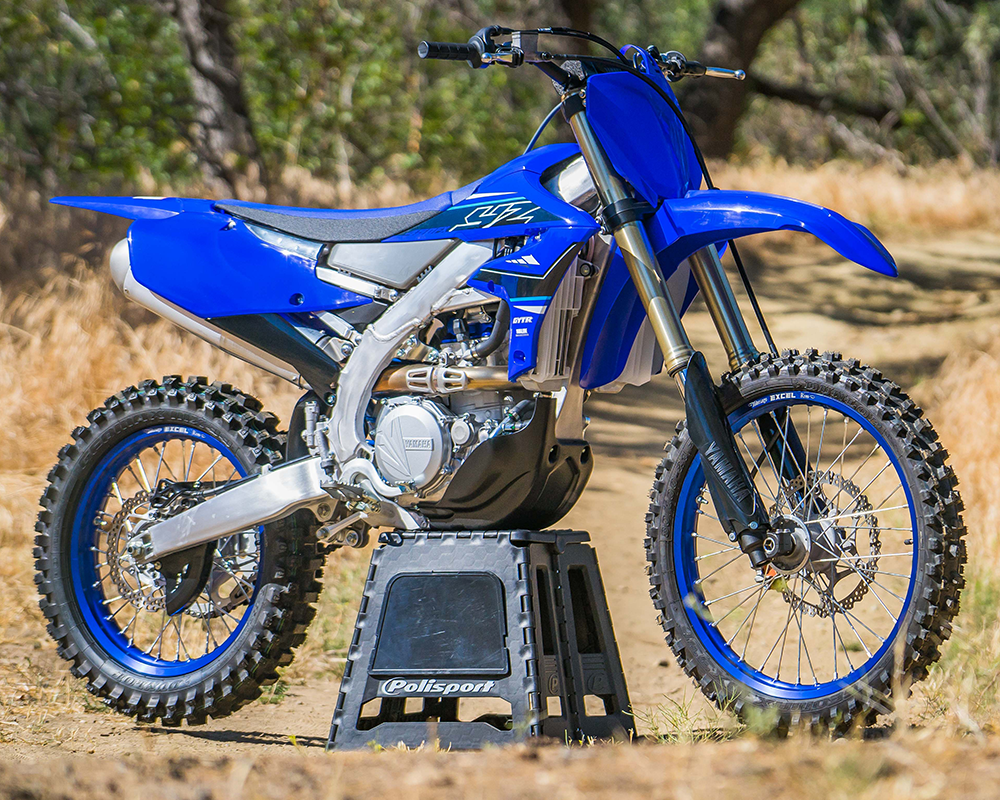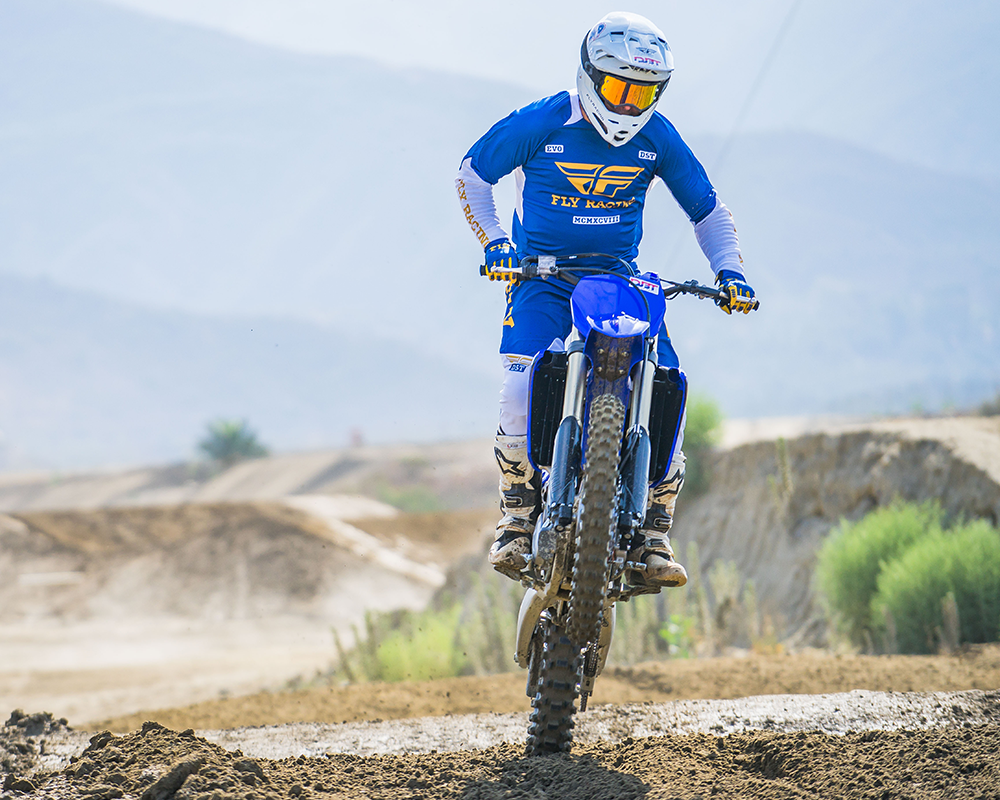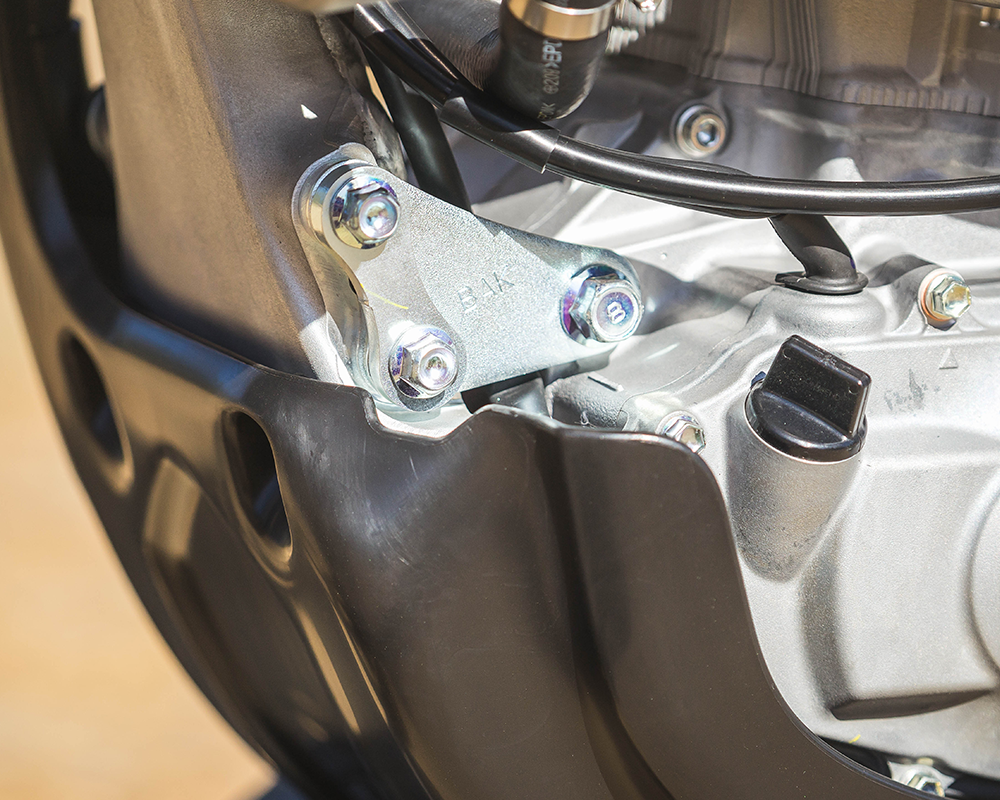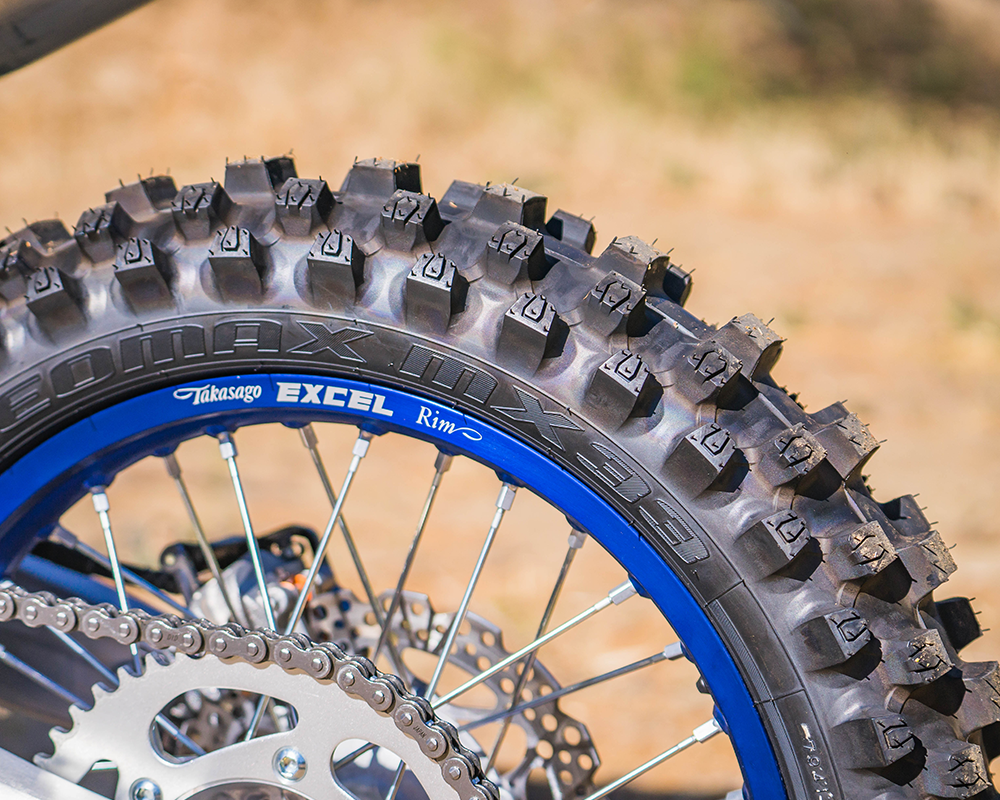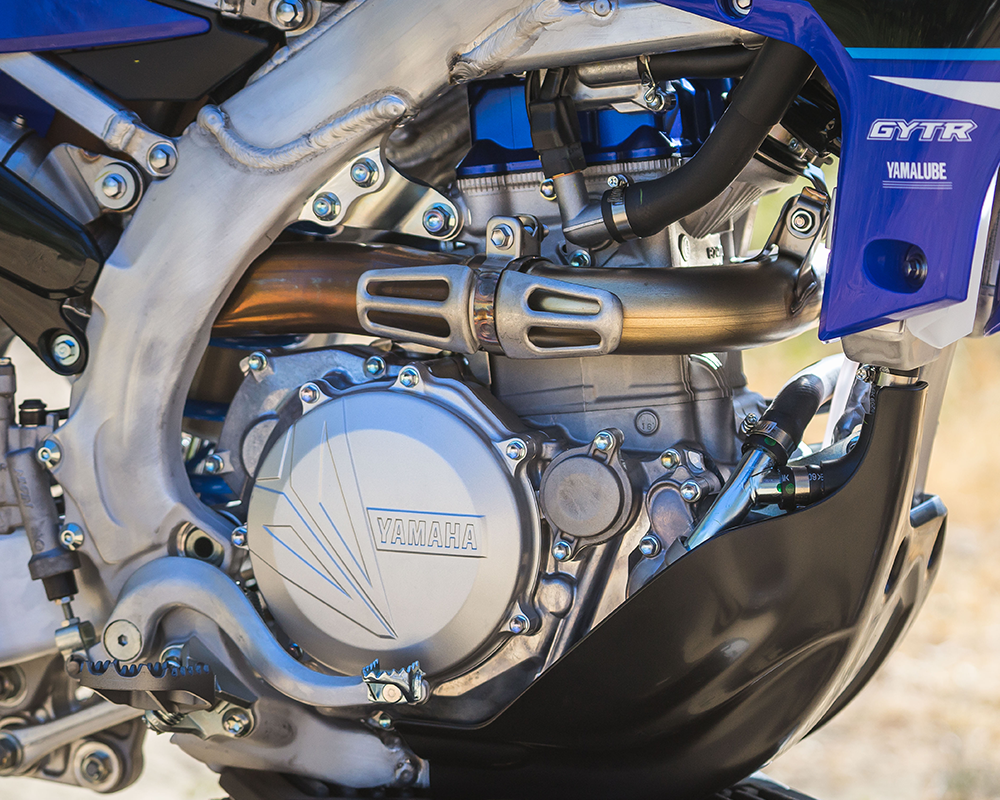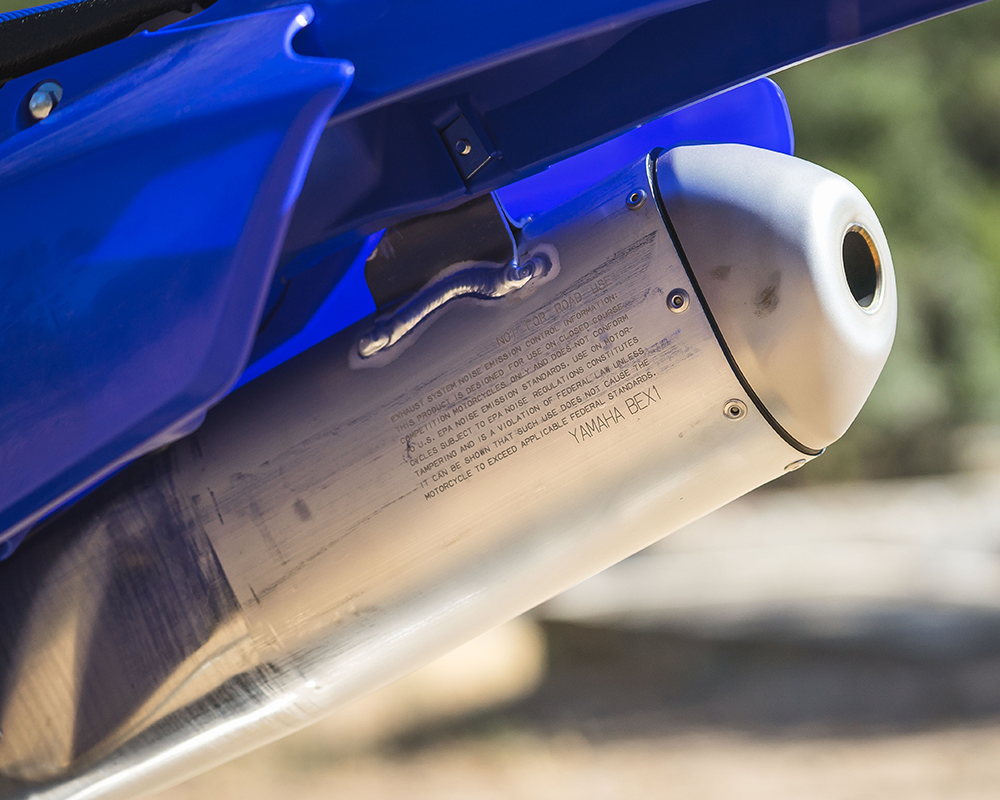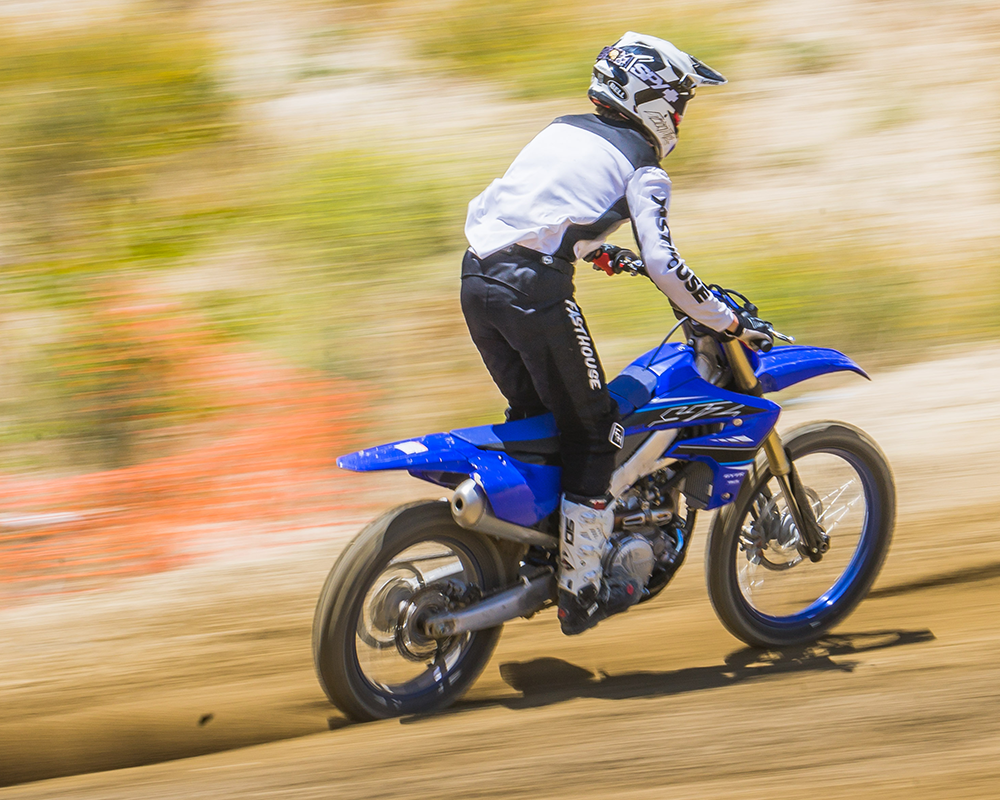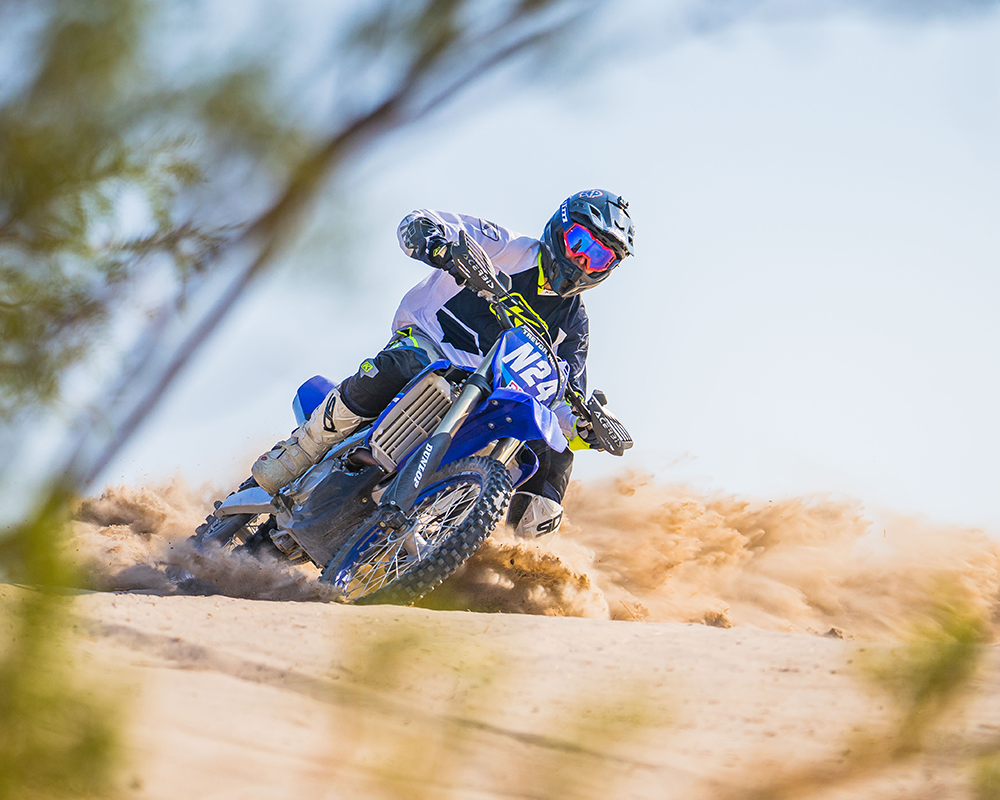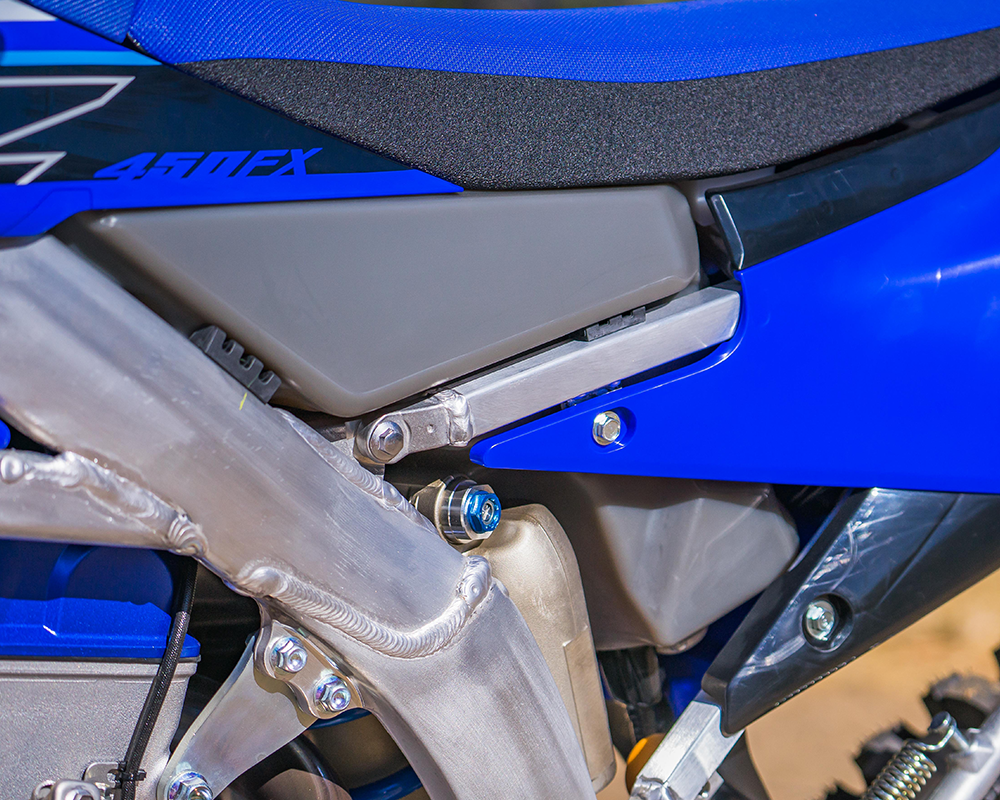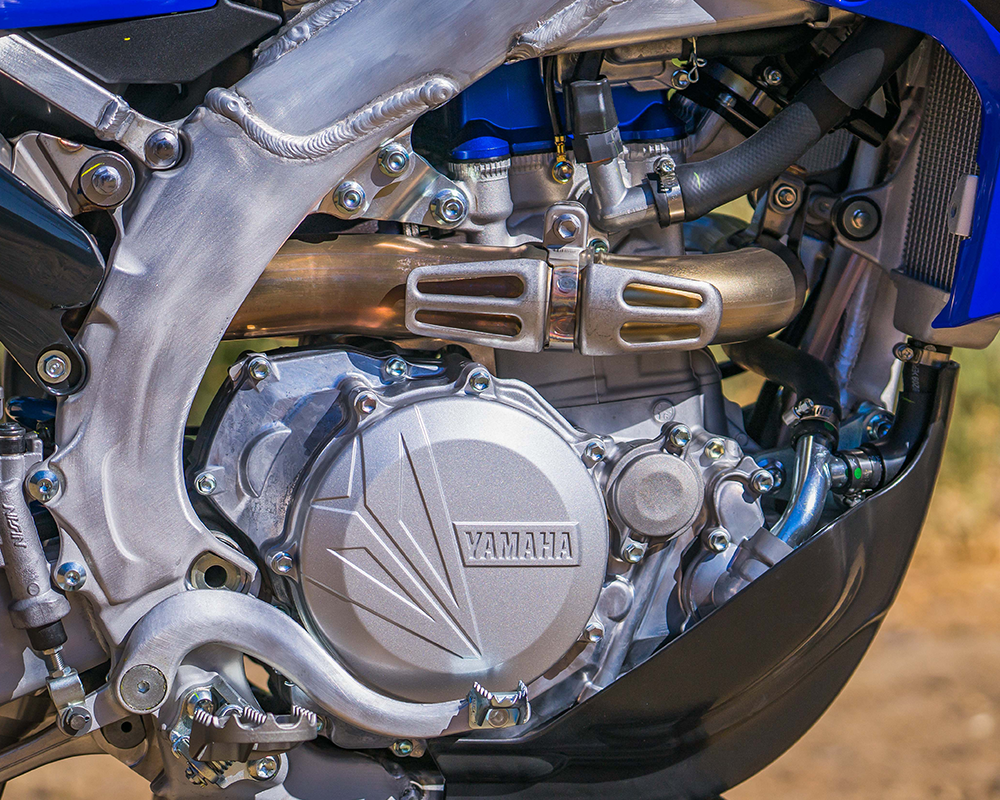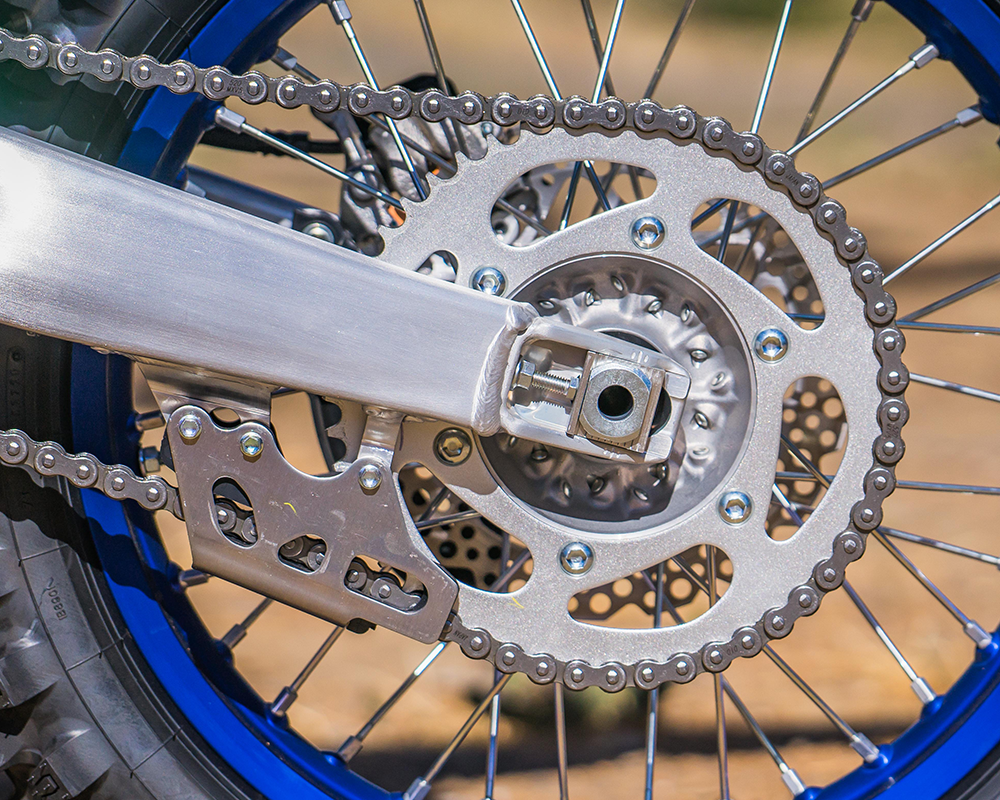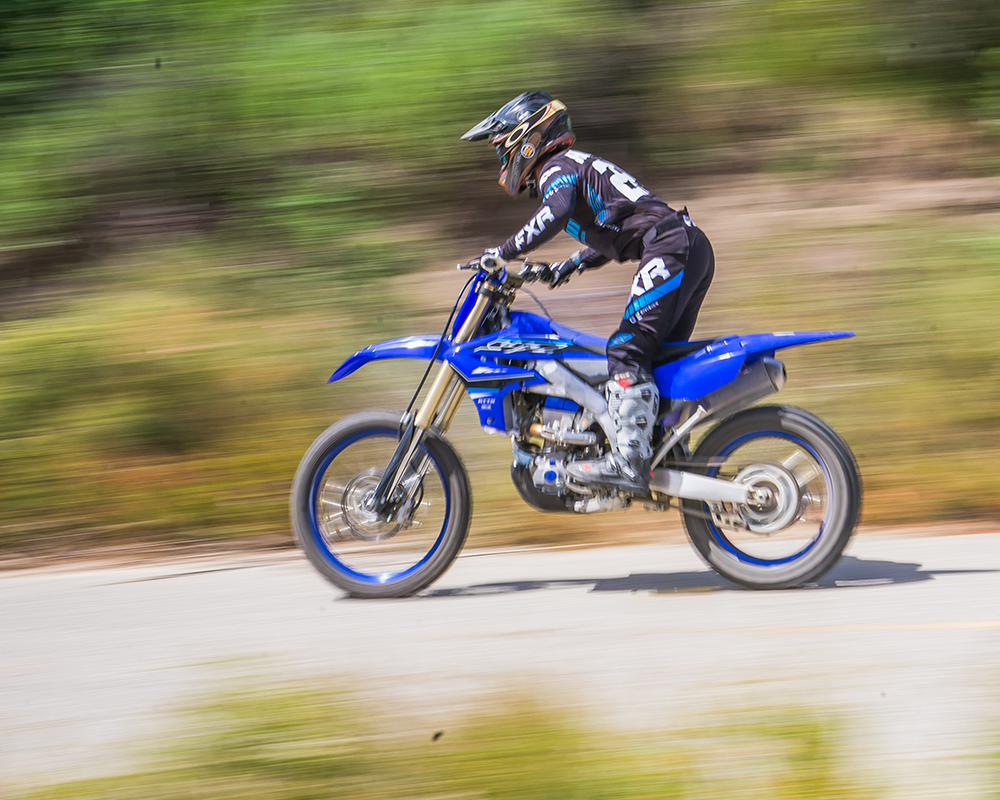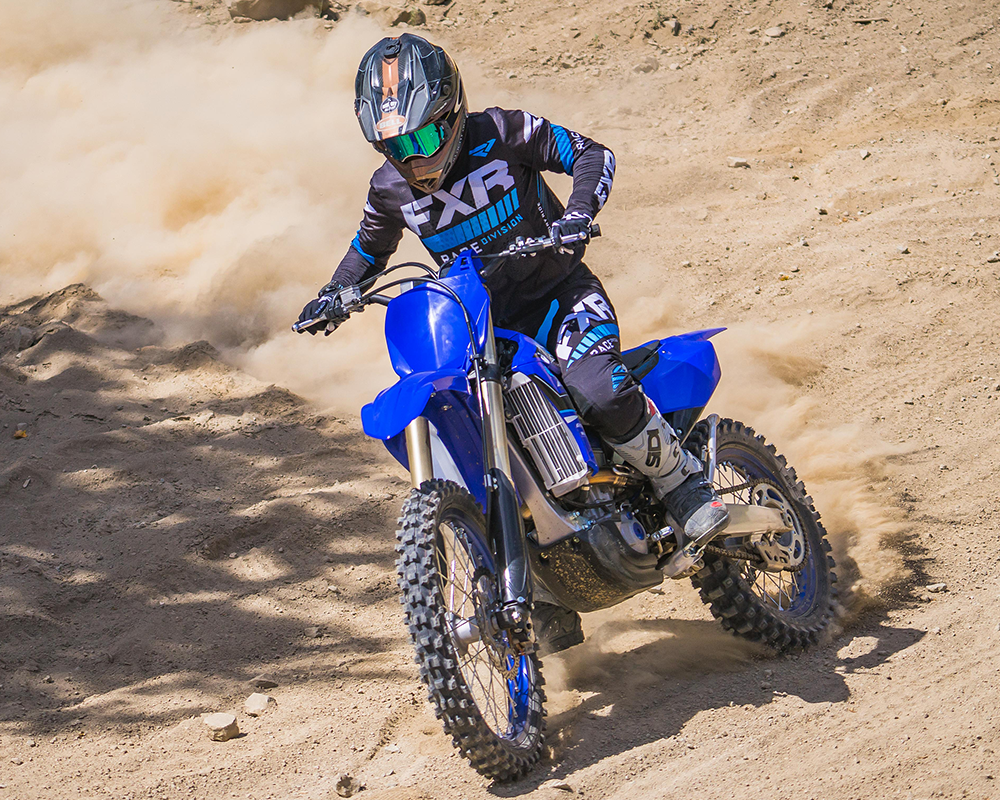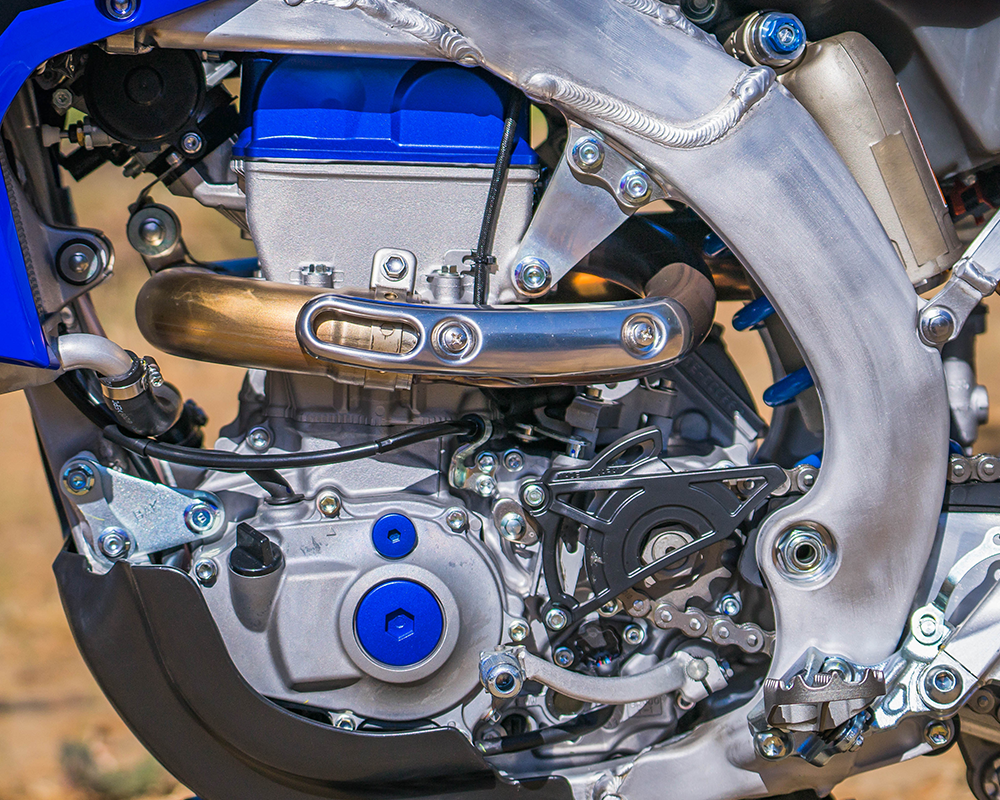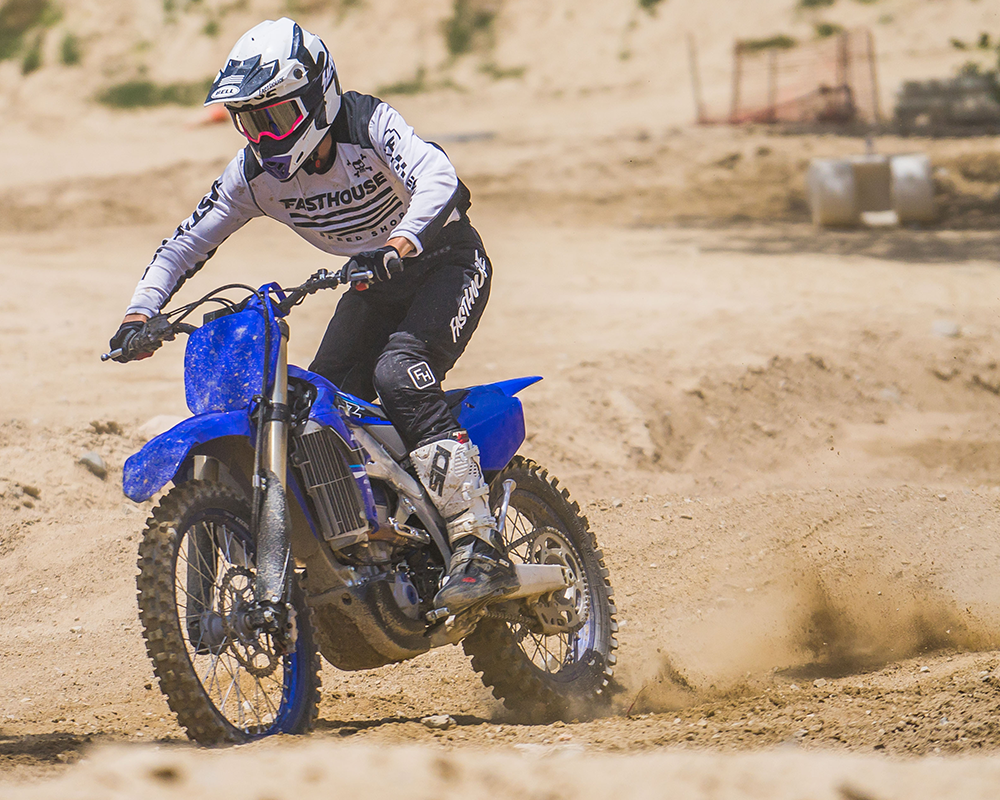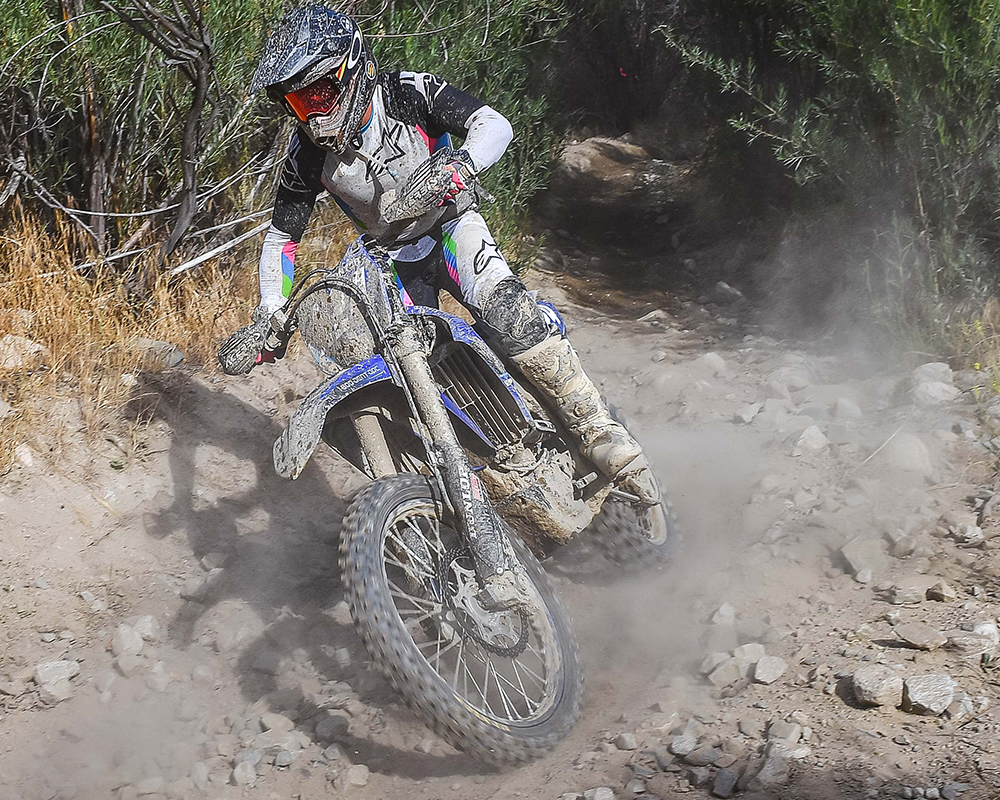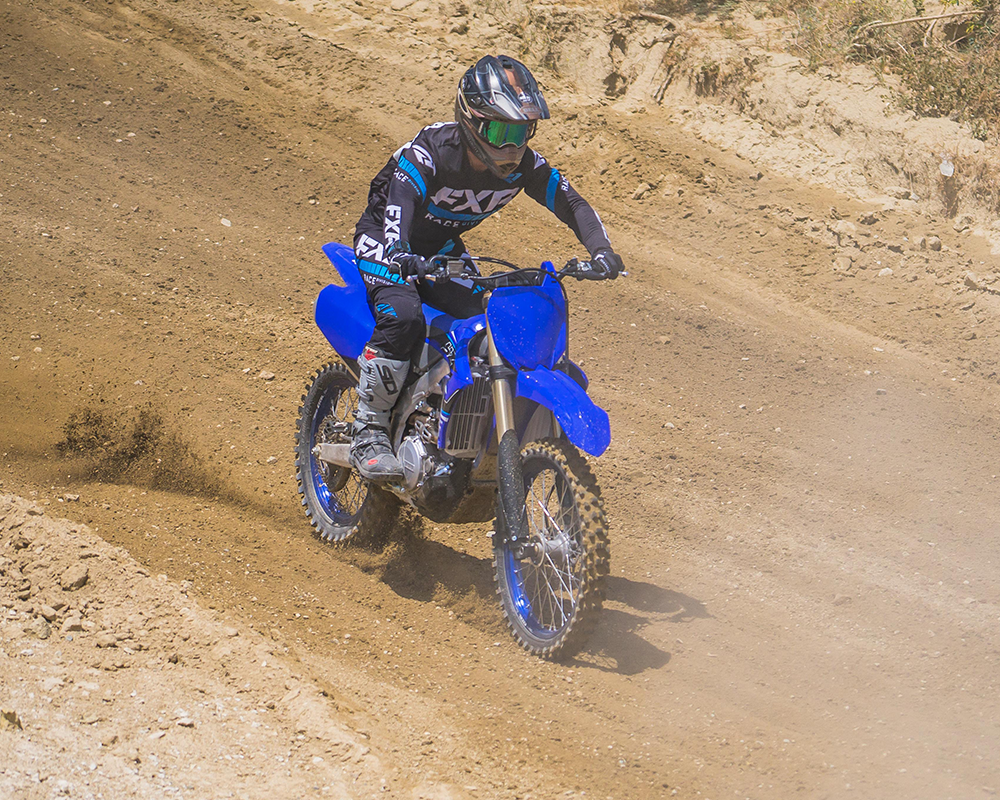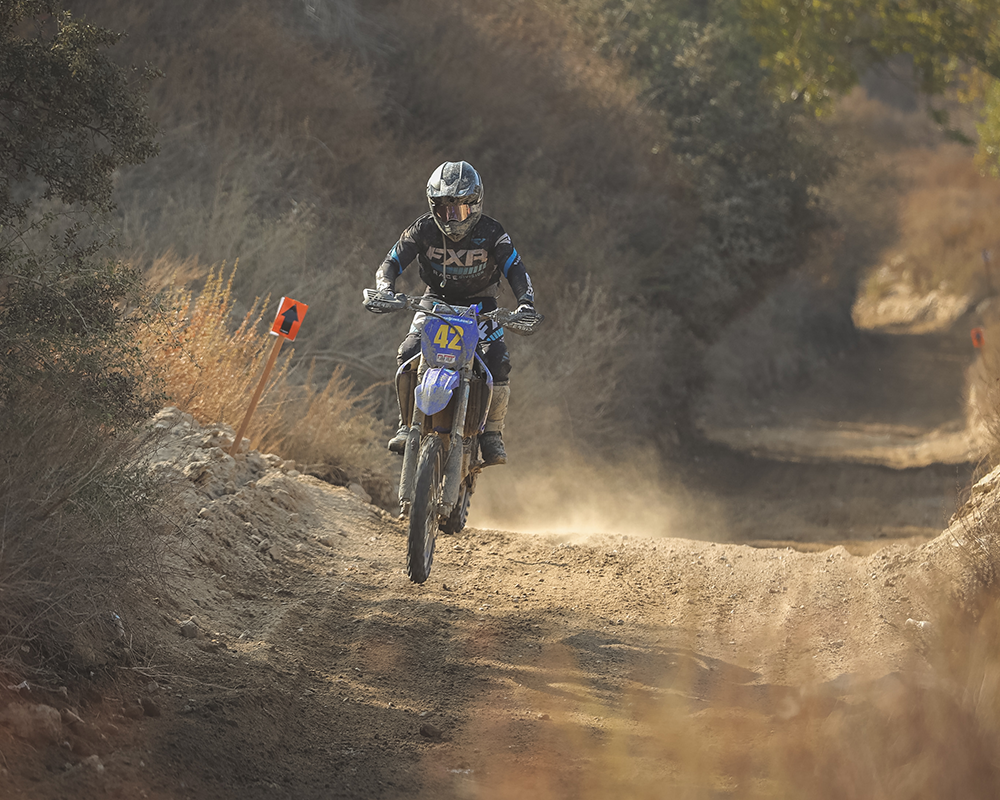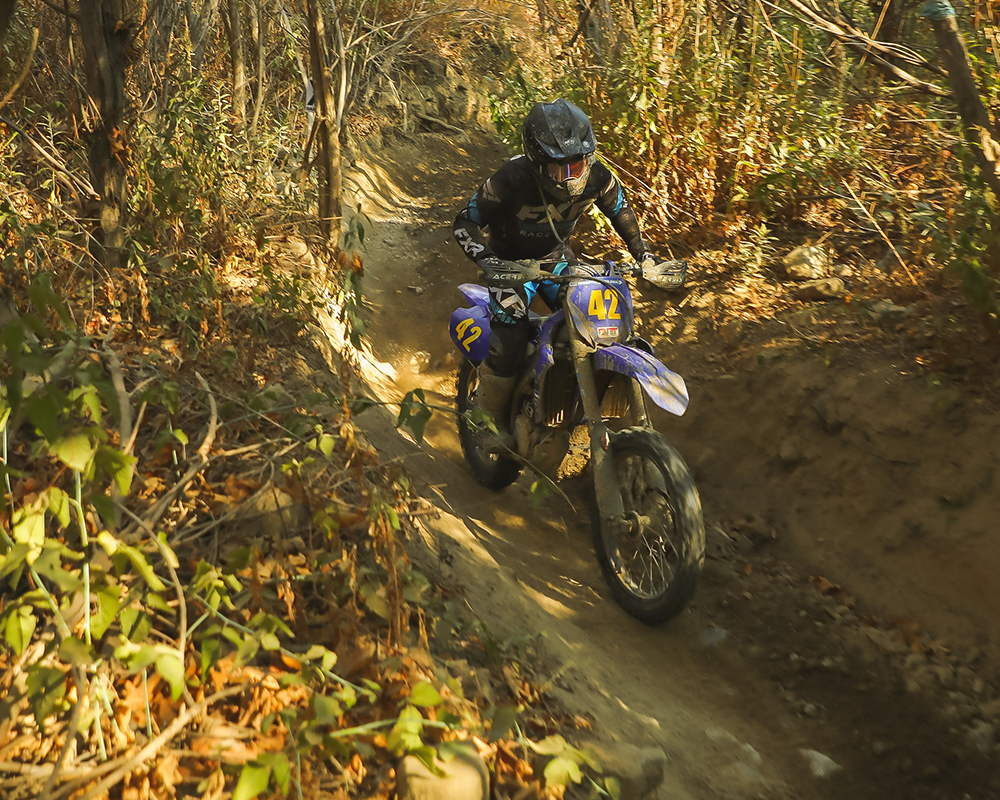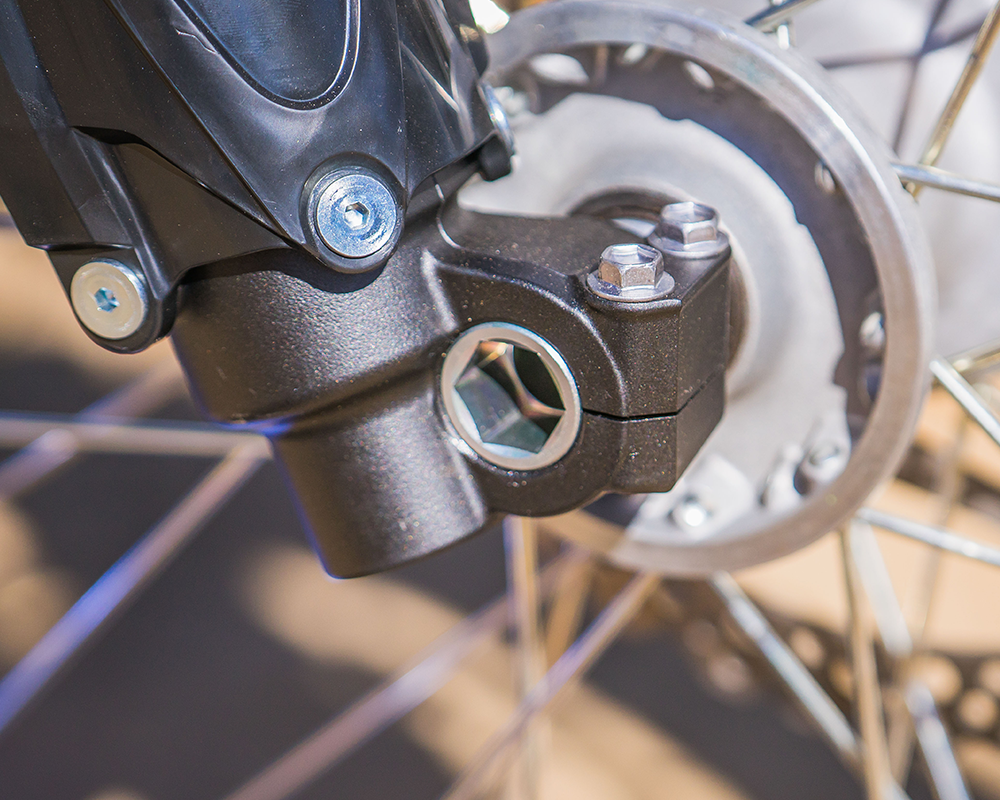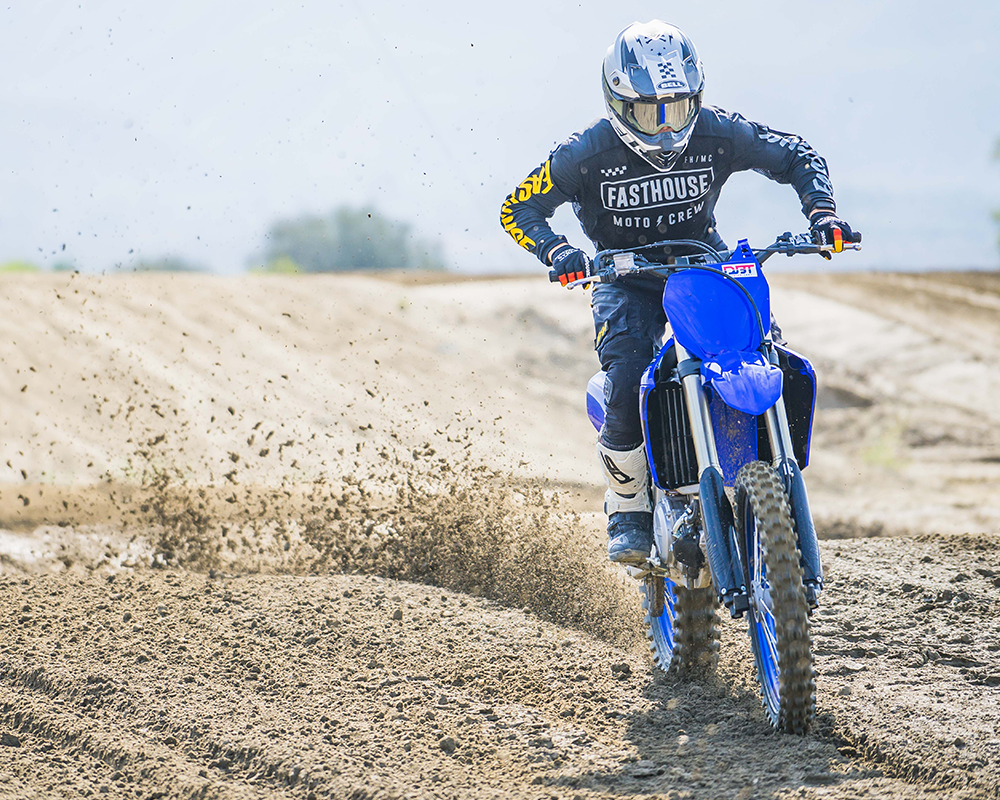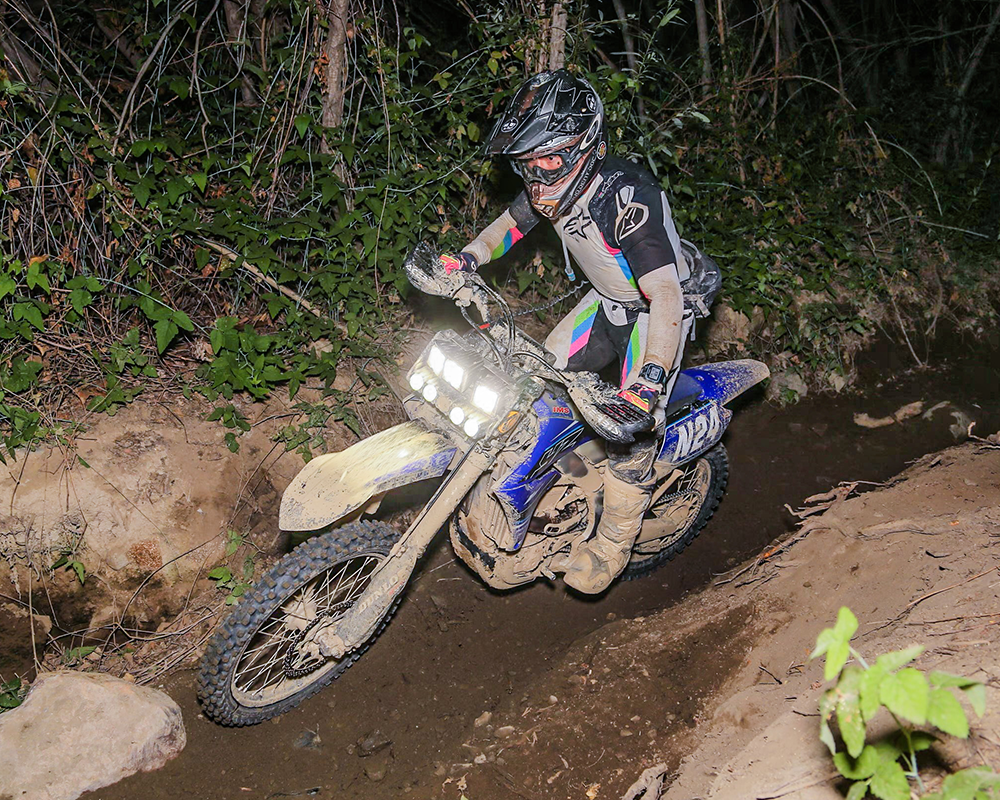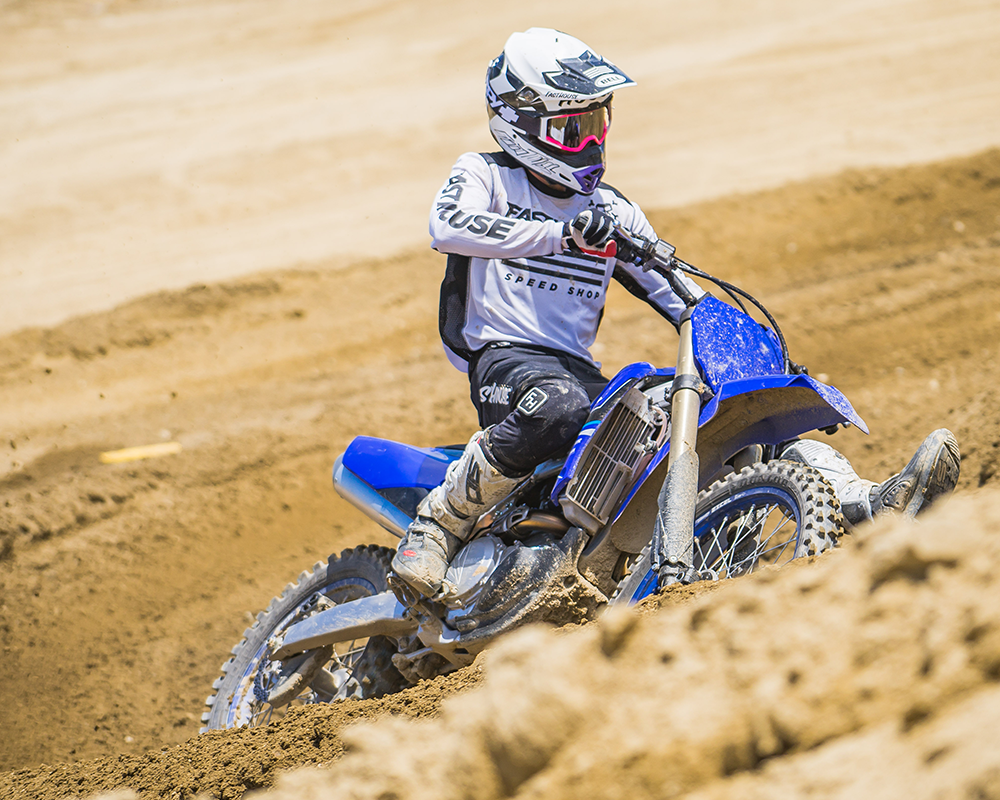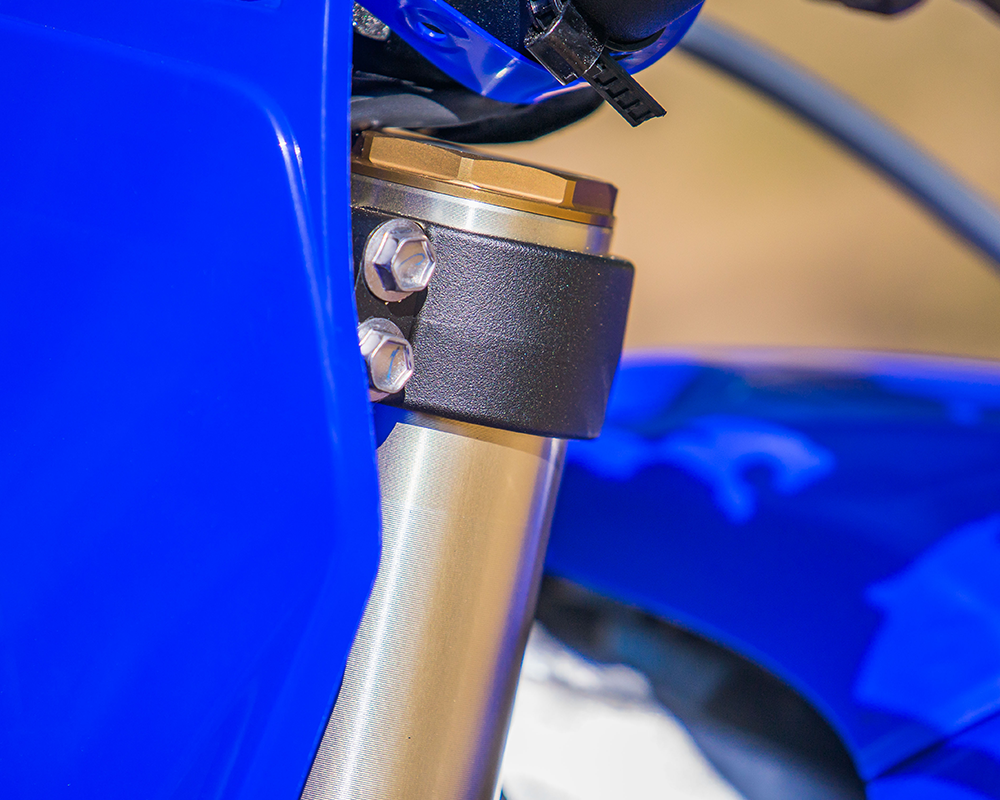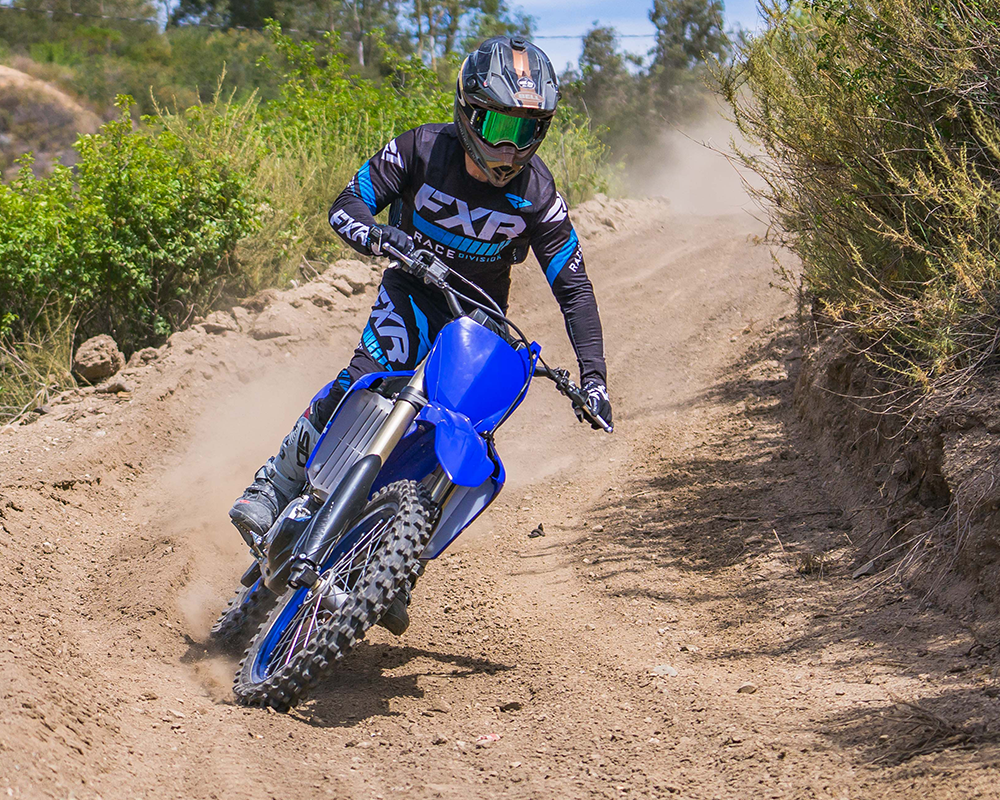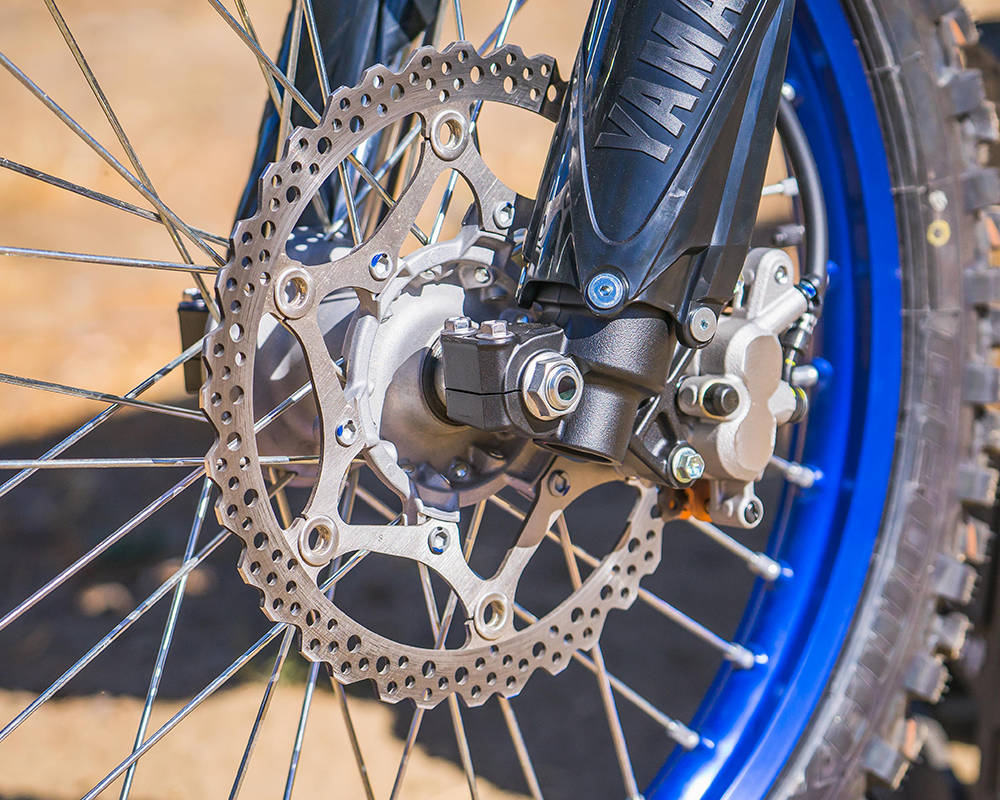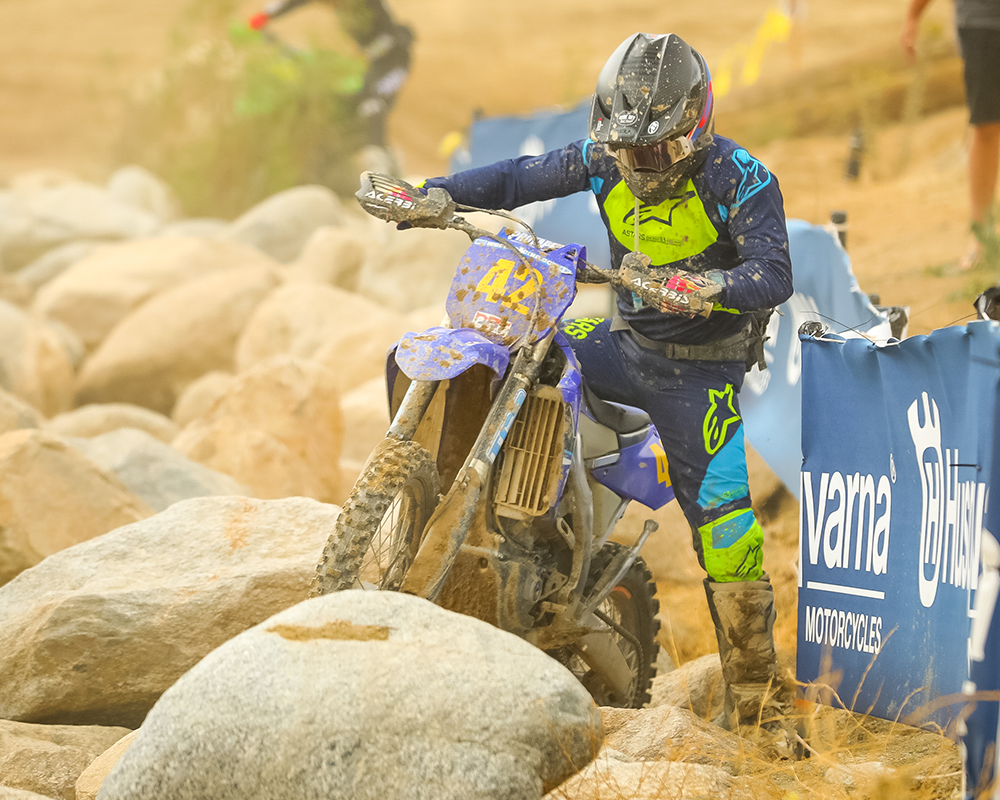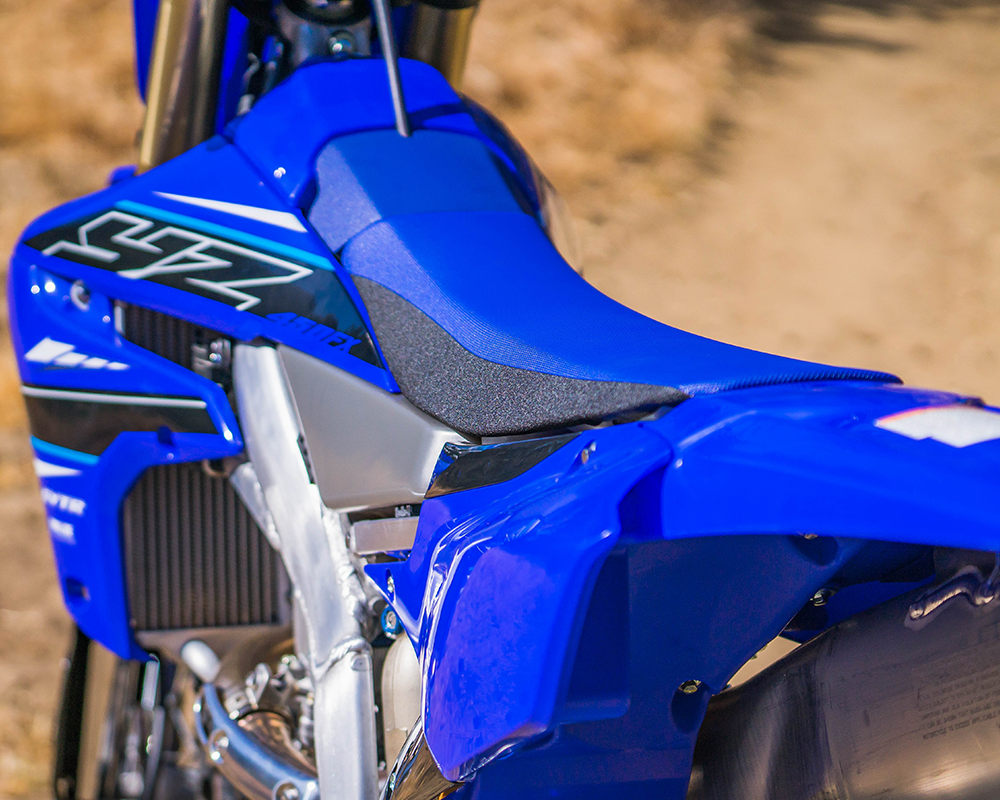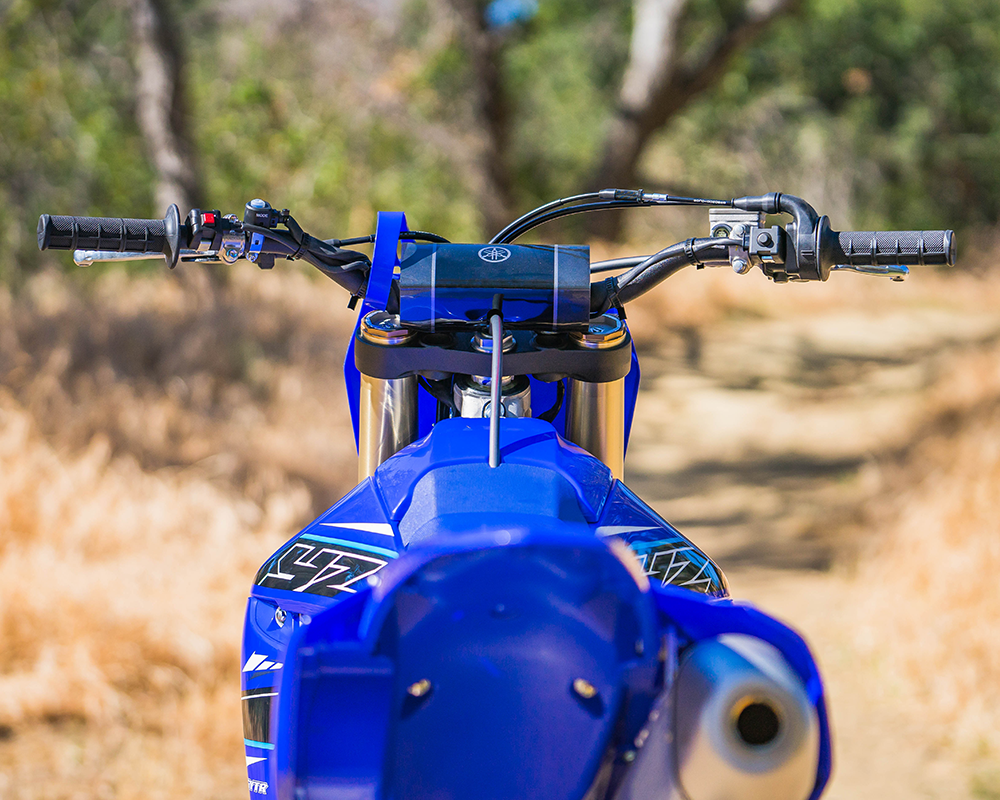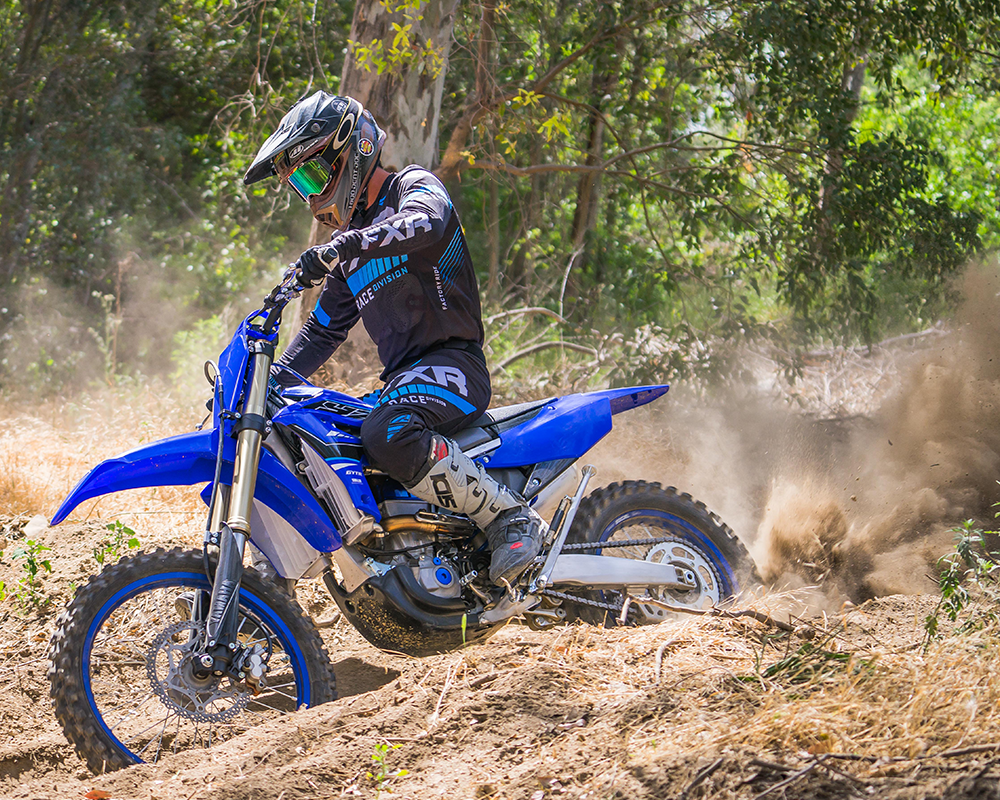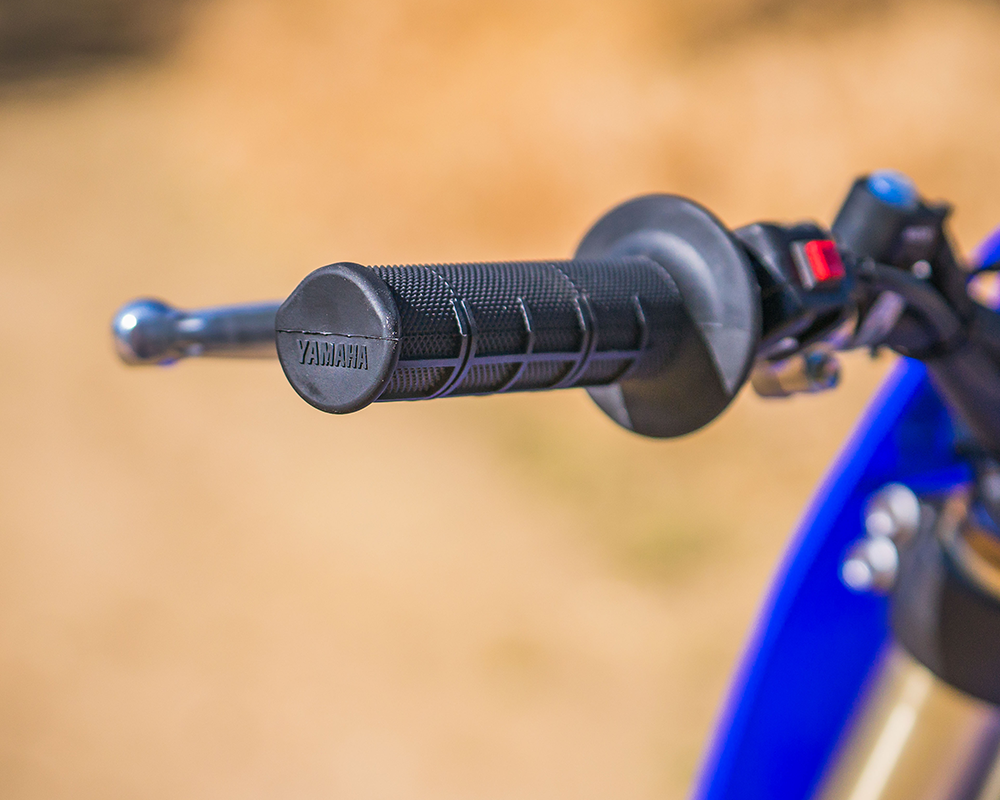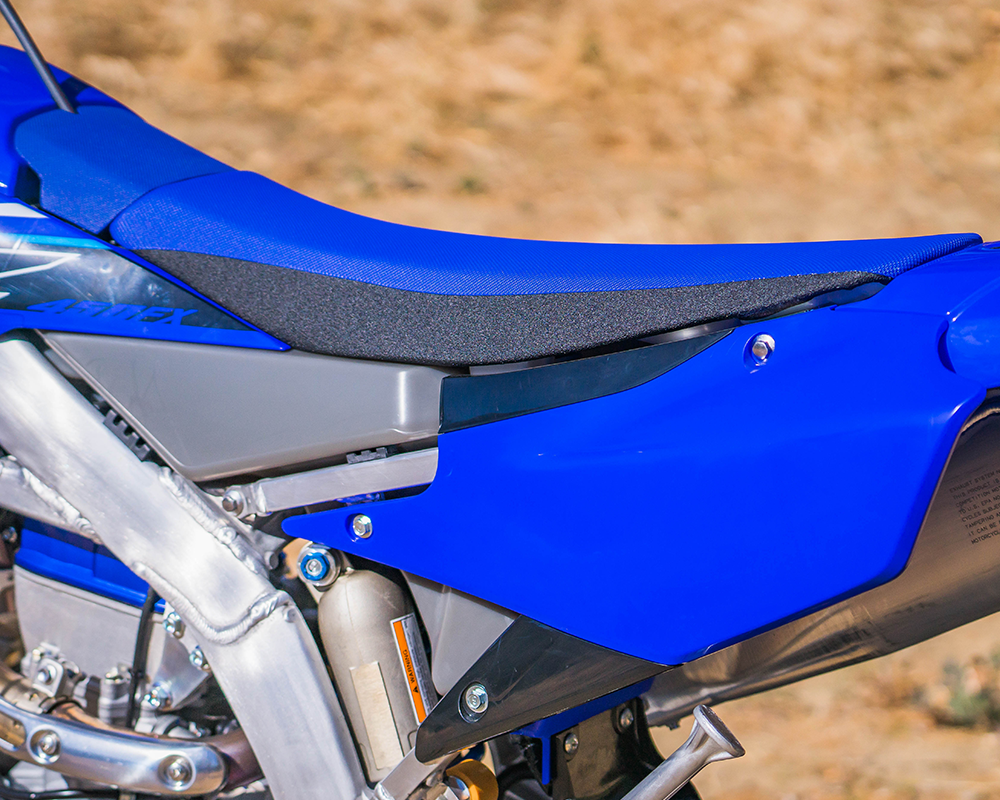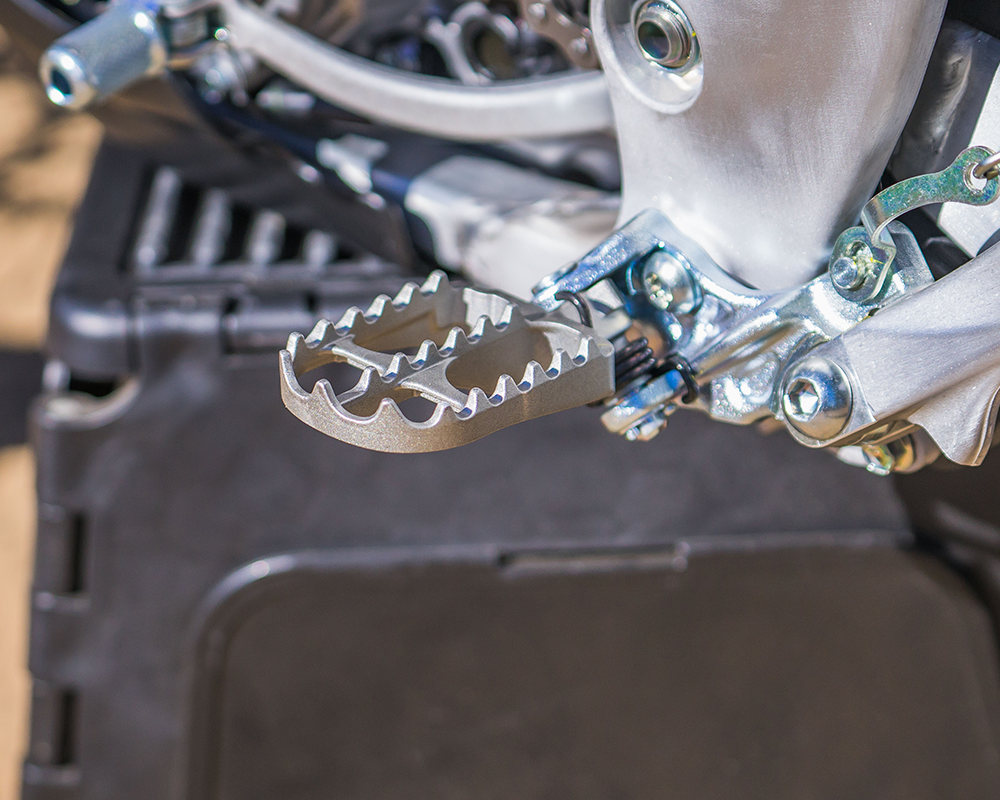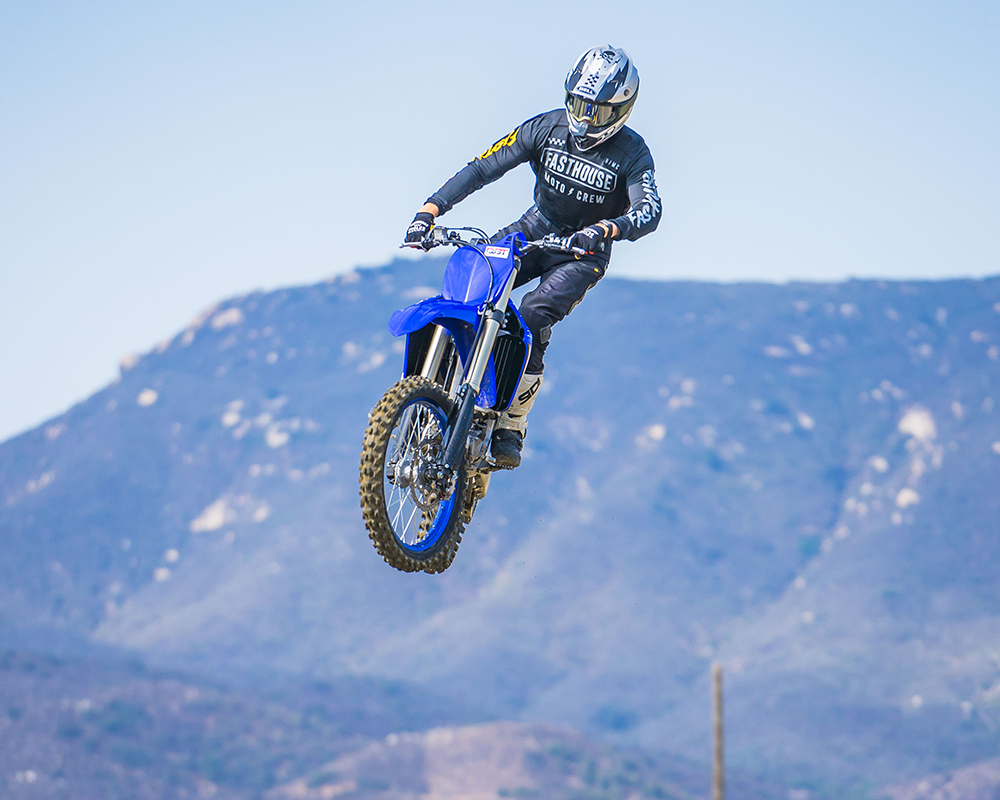2021 Yamaha YZ450FX
The Best One Yet?
MSRP: $9,899
- Durability.
- Neutral bike that appeals to the masses in stock trims.
- Power tunability with the GYTR tuning app.
- GYTR app can be daunting to new users.
- Scale weight can be heavy under extreme conditions.
Introduction
- Yamaha's big bore off-road racer with big updates.
Yamaha’s unique engine and chassis design has seen mixed reviews over the last decade as they continue to push the boundaries with a backwards engine. The 450cc four-stroke powerplant in particular has been more polarizing than not; however, it has seen more and more success as of late, including with the YZ450FX off-road race bike. Dylan Ferrandis just wrapped up the 450 Pro Motocross championship on a very similar YZ450F, and the AmPro Yamaha Team has been lights out fast in the GNCC and National Enduro races with Stu Baylor and Layne Michael at the helm. For 2021, the YZ450FX received a big overhaul and is now more similar than ever to the YZ450F motocrosser.
Changes
- Big changes for 2021.
- Engine updates.
- Chassis updates.
For 2021, changes are abundant. Although the cases are the same, nearly all of its guts have been revised. The most noticeable is the new head design, which is claimed to make a difference in both the power output and the handling since it is lower and more compact. The cams and port shapes have all been changed drastically, as well as a newer high-compression piston (12.8 to 13.0:1). Down below, the connection rod is 1.5mm longer to reduce side loads during the piston stroke. The ECU also offers a two-way programmable map switch via the handlebar and can be switched on the fly while riding, no need to stop.
The chassis geometry and pickup points remain the same but the frame thicknesses have been altered in key areas. The top mount has gone from aluminum to steel and the lower, steel to aluminum. To further alter the feel of the chassis, Yamaha put more flex into the top triple clamp and also reduced the front axle inner diameter by 1.4mm or 20% less rigidity. As a result of the chassis changes, Yamaha addressed the suspension settings to compliment each other. Braking has been a hot topic over the last few years and Yamaha’s possible answer is a new caliper with larger pistons and more surface area on the brake pads and front rotor. In the rear, the caliper hanger is lighter by a quarter pound and disk size has been reduced by 5mm to just 240mm. The front handlebar position has been lowered by 5mm and the bar mount position now comes standard in the forward position (pre-2021 in the rear position). The bar mount can still be adjusted four ways, up to 26.5mm rearward and 10mm forward if needed. Tires have been updated to the Dunlop MX33 from MX3S, not AT81s like most other off-road bikes come with.
What separates this bike from a YZ450F? The transmission, suspension settings, stock mapping, fuel tank, 18in rear wheel, o-ring chain, and kickstand make up most of the changes. From the WR450F, the 450FX is without a computer/headlight and steel sprocket, and hosts different suspension settings, a different ECU, different exhaust, and a different flywheel/stator.
Power
- GYTR Power Tuner App is a winner.
- Broad, smooth power delivery that can be adjusted at the click of a button.
- Easy to use mapping switch.
If there is one thing the bLU cRU has gotten good at over the past few years, it is getting a lot of power out of their engines and this YZ450FX doesn’t disappoint. Like the YZ450F, the FX model too packs a mean punch and delivers the goods whenever and wherever you want it. Though the MX and off-road race bikes feel similar in power, there is a difference when ridden back to back. Is it the old school, mellow and lazy feeling power that won’t get you up out of bed in the morning? No, not at all. To keep with the trends, Yamaha “detuned” the power just enough for it to translate to an off-road environment without removing its aggressive nature.
The bike has a fairly free-revving motor, though it pales in comparison to say a KTM who would be at the top of the charts in this kind of power delivery. Instead, the YZF pilots a smoother, slightly slower building engine with torque and power down low. Unlike most of the other bikes in its class, the Yamaha can be lugged deep and roll around at low RPMs without much abuse of the clutch whereas the others like to stall out easier and need more rolling speed to stay afloat. Part of that is due to the transmission (which we’ll get to later), but also due to how the motor runs. From the bottom up, the power is very smooth with no big surges, making it easy to ride even when there is a lot of power on tap. With all of the torque and bottom end power, the bike can and does respond well to riding taller gears. There is more than enough power in the mid-RPMs and it helps with the chassis and handling feel when ridden in the sweet spot.
The 450FX comes equipped with a mapping switch and it’s very easy to change on-the-fly, maybe the easiest out of all mapping switches. You can be racing at full speed and reach your thumb over to change maps and know for certain the mission was accomplished. Trust us, we’ve done it plenty of times. Whereas most otherbrands you have to sit there and hold the button down and put a serious effort into changing maps. With that being said, Map 1 (light off) is standard and Map 2 (light on) is pre-programmed to be a mellower map even when both maps are at all zeroes. This means that no matter what, the map in Map 2 will always be different from the same map that is in Map 1.
With both maps at all zeroes, Map 1 was a little too aggressive for most of our riders. It was very light feeling and jerky off the bottom, making it hard to ride, reminiscing a MX setting. Riding a gear tall helped this, but even then it was still too abrupt and surged when cracking open the throttle. Map 2; however, is easier to manage with a smoother delivery and pull. With some time on the YZ450F the past two years, some of our testers have come to like the “Magic Map” developed by the Yamaha crew and those same feelings translated over to the FX in most cases. On motocross tracks or faster terrain where you can carry speed, the Magic Map did its job in smoothening out the power. It eases off the initial hit but still carries good pulling power and enough “excitement” to keep the power lively, with some saying it revs out quicker like a 350cc four-stroke. Additionally, the map still allows us to ride taller gears or even rev the bike and ride it more like a 350cc four-stroke without getting away from us.
Where the Magic Map falters for us is in tight, techy terrain. It’s still too abrupt and hard to manage at the blip of a throttle, especially when traction is at a premium. The stock Map 2 with all zeroes is pretty good here, but we also liked the “JL Smooth” map (see photos) a tad more here. It really tamed it down with a smooth throttle response and you could chug the bike through a lot more without the clutch. The JL Smooth map is what we primarily ran on our way to an overall victory at the recent 2021 24 Hours of Glen Helen.
The transmission on the FX is interesting. In that case, the Yamaha really sticks out compared to the rest of the bikes in this sector. Every other 450cc “FX” model from the main players uses the same transmission and motor package as the MX offering except for Yamaha. They plugged in a semi-wide ratio transmission with lower 1-2 gears and taller 4-5 gears. For us, we really haven’t found a use for 1st gear. It's really, really low and with 2nd still being low, even in the tightest terrain we found ourselves using 3rd gear more often than not and just covering the clutch. This helped retain a smoother, less jerky power off bottom and easier to ride. For any moto and typical off-road riding, 3rd gear was used quite a bit and we never really ventured below that. The motor has enough meat to pull it off in a smooth, lower RPM manner and is easy to ride in this gear.
We messed around with gearing but usually returned back to stock. If we were riding/racing in the desert, we’d drop some teeth on the rear wheel and venture to a 48T rear sprocket, but overall the 13/50 setup was ideal for most conditions. Just focusing on riding gears 3-5 and carrying momentum kept us in the sweet spot of the power.
Clutch pull is fairly light for a cable clutch on a 450cc machine and we never found ourselves wishing we had a hydro clutch. Durability of the clutch has been good as well. We put ~42 hours on the stock clutch before changing it for the 24 Hours of Glen Helen, though we only did that as a precautionary measure. After the 24 hour, the clutch still felt and worked as new, though we’re never ones to really abuse a clutch much. Shifting is smooth and precise and we never found any faults in that department. With the stock 2.2 gal tank, we could go ~50 miles on a tank in average conditions.
Suspension
- Stiffer than previous years, but still on the supple side.
- Adequate valving for most riders and racers.
Off-road suspension isn’t the easiest to set up for. East coast vs west coast settings are drastically different, and terrains within those coasts vary widely as well. Safe to say, it’s much more difficult than setting up MX suspension.
In general, Yamaha has gravitated to a more GNCC style, plusher setting in their off-road bikes and this one is no different. It’s softer in nature, provides a lot of comfort and traction, and appeals to the masses. The suspension likes to move through the stroke, but in a progressive manner to avoid any hard bottoming. Like every other Yamaha as of late, the KYB components shine in bottoming resistance and having a “smooth” transition when bottoming. You never get the metal to metal clanking and wrist breaking feeling on this stuff. And even with the good bottoming, there’s rarely any harsh spots throughout the stroke.
Heavier riders typically needed to increase compression front and rear, if not springs, to help keep the bike riding higher in the stroke and that’d help combat the harshness. We’ve found the same feelings on new YZF MX bikes and it did the trick there as well. Our typical sag was in the 105mm range everywhere we rode.
We raced and rode quite a bit on the stock suspension, and it took a long time to find a fault in the settings. With Pro level riders on the bike, we could comfortably moto and race west coast style GP’s with just the average clicker adjustments. We even raced the 10 Hours of Glen Helen to 4th Overall on stock clickers and springs on a faster, choppy course. But, as time went on and we found rougher and rougher tracks, the soft nature caught up to us and we could see where a stiffer setting was needed. But, unless you’re riding on the roughest courses imaginable, which most people aren’t, there is a lot of potential in the stock YZFX settings.
Chassis - Handling
- More nimble and agile chassis feel.
- Scale weight doesn't translate to handling feel.
The handling of the YZF’s can and has been a hot topic in past years, but this latest generation Yamaha has turned some heads. From the ‘19-20 FX model years, this newest chassis is more performance based with increased agility and precision. The old frame design lent itself to more of a Cadillac feel whereas this generation comes closer to a racey sports car. That’s not a bad thing however. The bike still offers a lot of stability and comfort to the rider, especially in comparison to some of the other bikes out there. If anything, it just adds that little extra precision needed when pushing the limits and makes the bike feel a little lighter in the process.
Despite a heavy scale weight, that doesn’t translate to the track or trails unless you’re physically manhandling your bike -- trust us, we did at one point. But for most situations, the weight of the bike isn’t felt in a negative way, more so in a positive way. It helps keep the bike planted and straight, boosting that stability talked about earlier. While it might not be the best turning motorcycle, it still holds its own.
The bike has a longer feeling, heavier steering feel which is most noticeable in the trees and in tight turning scenarios which not all of our riders liked, but that translated to a more stable ride in faster or bumpier conditions. Even in the air where most bikes will show their weight, the YZF doesn’t show all of it as it still leans towards the light and nimble side.
The cockpit on the YZF isn’t the best. It has a lower seat height that is a little more cupped out for today’s standards, and the distance from the seat to the pegs is a little cramped for most riders. Yamaha sells a tall seat as a GYTR accessory and all of our riders, tall and short, preferred it. The bar mounts are adjustable in the triple clamps and our group is 50/50 on what position they like. Stock, they come in the forward hole and backwards facing position but some like it the old way in the backwards hole but forward facing position.
Gone are the days of the bike feeling like a pig. The bike doesn’t feel wide at any point anymore, the only “negative” is the sucking noise you hear at the airbox but that’s only temporarily noticeable. Footpegs are really good stock with a nice, wide platform and good grip. We’re fans of the grips and think they’re better than most other OEM grips.
Overall, the bike is built well too. We didn’t have any issues with broken spokes, broken welds, bolts falling out, etc. The ease of removing a shock with the stock tank is one of the best. Simply removing the seat and gas tank in just a couple of bolts opens up to quite a bit of the bike. If you have a desire to check valves, it’s all right there as well. No issues with the starting, and it usually started fairly quickly unlike the YZ250F’s which are known to take longer.
Brakes are average which isn’t a bad thing. Most of our riders like the smaller 240mm rear disc as it’s a little less grabby. The stock chain is built to last and will outdo the aluminum sprockets that come on it. Wheels are pretty strong, though we did get some smaller dents in them with all of the racing we did.
Conclusion
- A very neutral, get on and go motorcycle for the masses.
Like most bikes we test these days, the YZ450FX is a very good bike. We’re lucky in that no one really truly puts out a bad bike that isn’t capable and appealing to any rider out there. However, what this Yamaha shines is that it is so appealing to so many people. It’s transitioned from a more peculiar bike that had a love it or hate it relationship with its riders to now being one of the most neutral bikes out there. It doesn’t really have many knock your socks off features and the spec sheet isn’t all that impressive, but once you get the bike moving everything works in unison.
The suspension is very good right out of the box. Don’t feel the need to have to get a revalve before you even ride it because it’ll surprise you. If anything, get the right springs and put some hours on it before trying anything else. Likewise, the motor is very capable and the GYTR Power Tuner app is like having an endless combination of aftermarket exhausts at your fingertips, except it’s free and no bike work is needed.
Durability on this bike has been rock solid and we put a total of 67 hours on it with just oil and filter changes. Our oil changes took place every 4-5 hours due to its lower oil capacity and we changed the oil filter every other oil change. The air filter is one of the easiest to get to and change if needed, but being up high helps keep it cleaner than most. When piloting this bike in the 24 Hours of Glen Helen, zero issues on the bike’s end came up which is more than impressive when running at the front of the race like we did. Yamaha’s durability has been no joke in years past and it continues to be to this day.
Lastly, just because this is an “off-road bike,” don’t let that deter you from taking it to the motocross tracks. For the average rider, the softer suspension settings and smoother power delivery will work in your favor. It’s easier and more comforting to ride than the standard MX model which fits the bill for most riders out there. Oh yeah, it has a kickstand too!
Recent Product Tests
Leave a Reply



